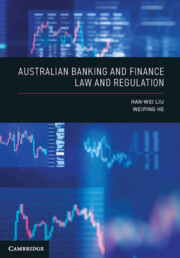8 results

Australian Banking and Finance Law and Regulation
- Coming soon
-
- Expected online publication date:
- July 2024
- Print publication:
- 31 July 2024
-
- Textbook
- Export citation
Underground nuclear astrophysics experiment JUNA in China
-
- Journal:
- Proceedings of the International Astronomical Union / Volume 15 / Issue S350 / April 2019
- Published online by Cambridge University Press:
- 12 October 2020, pp. 313-320
- Print publication:
- April 2019
-
- Article
-
- You have access
- Export citation
Moissanite in serpentinite from the Dabie Mountains in China
-
- Journal:
- Mineralogical Magazine / Volume 72 / Issue 4 / August 2008
- Published online by Cambridge University Press:
- 05 July 2018, pp. 899-908
-
- Article
- Export citation
Underground Nuclear Astrophysics in China
-
- Journal:
- Proceedings of the International Astronomical Union / Volume 11 / Issue A29A / August 2015
- Published online by Cambridge University Press:
- 27 October 2016, pp. 333-336
- Print publication:
- August 2015
-
- Article
-
- You have access
- Export citation
Hierarchical ZnO films with microplate/nanohole structures induced by precursor concentration and colloidal templates, their superhydrophobicity, and enhanced photocatalytic performance
-
- Journal:
- Journal of Materials Research / Volume 29 / Issue 1 / 14 January 2014
- Published online by Cambridge University Press:
- 03 July 2013, pp. 115-122
- Print publication:
- 14 January 2014
-
- Article
- Export citation
A generalised Lucasian primality test
-
- Journal:
- Bulletin of the Australian Mathematical Society / Volume 74 / Issue 3 / December 2006
- Published online by Cambridge University Press:
- 17 April 2009, pp. 419-441
- Print publication:
- December 2006
-
- Article
-
- You have access
- Export citation
Identification of Endogenous/transfected Synaptic Proteins in Primary Neuronal Culture by a High-yield Immunogold Labeling
-
- Journal:
- Microscopy and Microanalysis / Volume 9 / Issue S02 / August 2003
- Published online by Cambridge University Press:
- 18 July 2003, pp. 1498-1499
- Print publication:
- August 2003
-
- Article
-
- You have access
- Export citation
Optical Absorption of Copper Nanoparticles Dispersed within Pores of Monolithic Mesoporous Silica
-
- Journal:
- Journal of Materials Research / Volume 17 / Issue 5 / May 2002
- Published online by Cambridge University Press:
- 31 January 2011, pp. 1125-1128
- Print publication:
- May 2002
-
- Article
- Export citation



